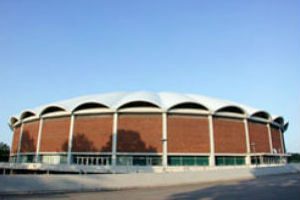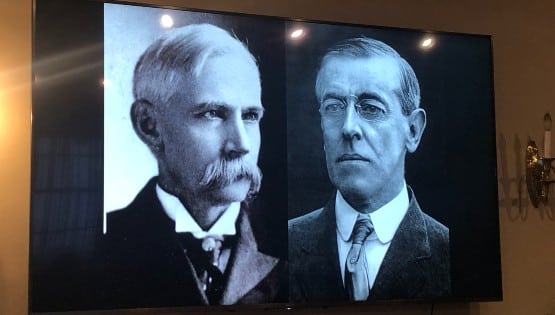
Paul Tudor Jones was in Charlottesville early that year to take in a basketball game between Duke and Virginia.
The 1976 UVA alumnus hadn’t been back to University Hall for years – and was not impressed with how his alma mater had kept it up since he had matriculated on Grounds.
Barry Parkhill, the former star player who works in the Virginia Athletics Foundation development office, remembers getting a phone call from Jones the next morning.
“I had met him once or twice, but had not spent any significant time with him. He attended a basketball game on a Wednesday night, and called on a Thursday morning. Other than some informal going back and forth, catching up, he basically said, ‘When are we replacing that dump,’ meaning University Hall,” Parkhill said.
That was one of the many anecdotes from a book that I co-wrote, with Patrick Hite, on the history of University Hall – Mad About U: Four Decades of Basketball at University Hall – back in 2006.
We devoted an entire chapter to the planning that led to the construction of the John Paul Jones Arena, and the next steps for U Hall.
It didn’t start out with thinking about building a new arena. The idea at the outset, in the late 1980s, was to expand University Hall, but that one fizzled quickly, when a feasibility study spelled out that it would cost upwards of $40 million to add 1,000 seats to the building, which had a capacity of 8,392 for basketball.
Terry Holland, the former basketball coach who later served as athletics director at UVA from 1995-2001, helped dispense with another approach that had briefly gained traction, to expand capacity by sinking the floor.
Holland pushed the focus away from doing something on the imprint of U Hall toward building a new facility.
Holland said the effort that he initiated to get the administration to go along with that line of thinking was “one of the hardest battles that I had to fight.”
Then the battle shifted, because as all of this was going on with basketball, UVA had engaged itself in an effort to make improvements at Scott Stadium, adding 19,000 seats and a video scoreboard for the football facility.
A $20 million commitment from Jones, after the phone call to Parkhill. jumpstarted the planning for a new basketball arena, which would eventually have a seating capacity for basketball at 14,900, an increase of more than 6,500 over the capacity across the street at University Hall, with state-of-the-art sound and lighting that allows for extra dollars to come in throughout the year through concerts and other live events.
What became the John Paul Jones Arena opened in 2006. The long-term plan for U Hall, even then, was to do what we’re finally see happening now.
“U Hall, when you stop and think about it, it’s going to cost a whole lot of money to make U Hall disappear. We’re talking about a period of five to 10 years before we can get that going. That’s a very big project,” Parkhill told me back in a 2006 interview for Mad About U.
A big project, and an expensive one.
The project, including demolition and construction, will come in at around $180 million, which, for perspective, cost $131 million by the time construction was completed in 2006, or about $167 million in 2019 dollars.
Story by Chris Graham










